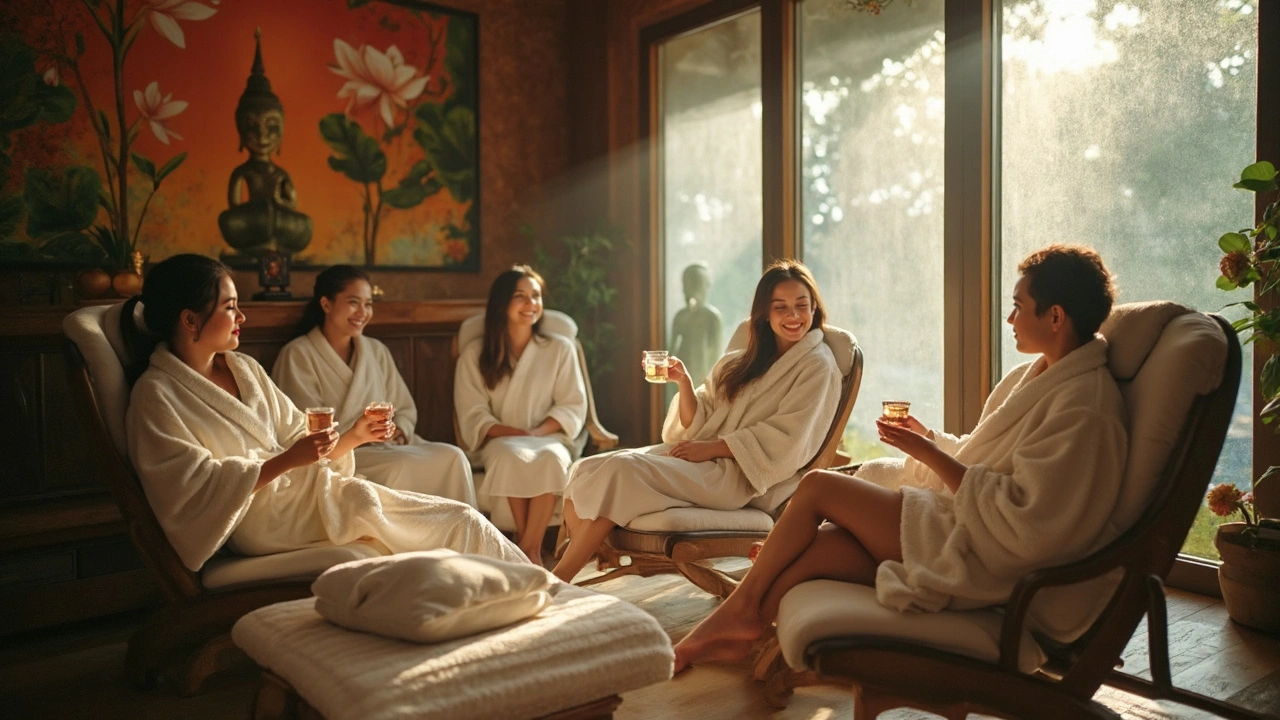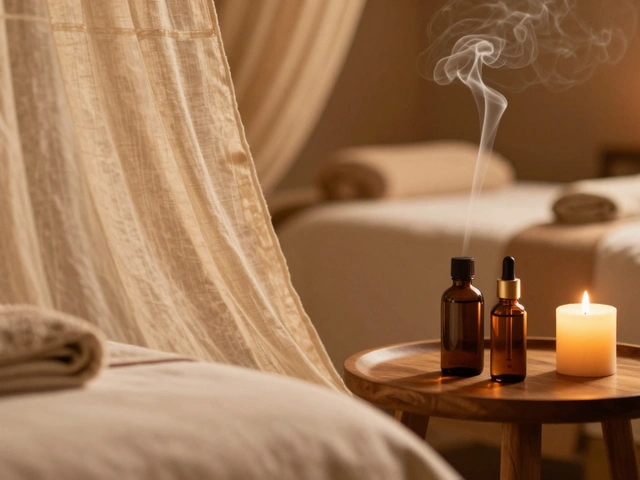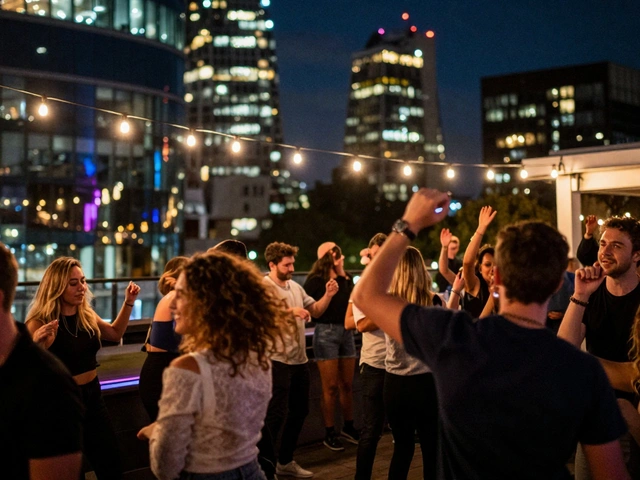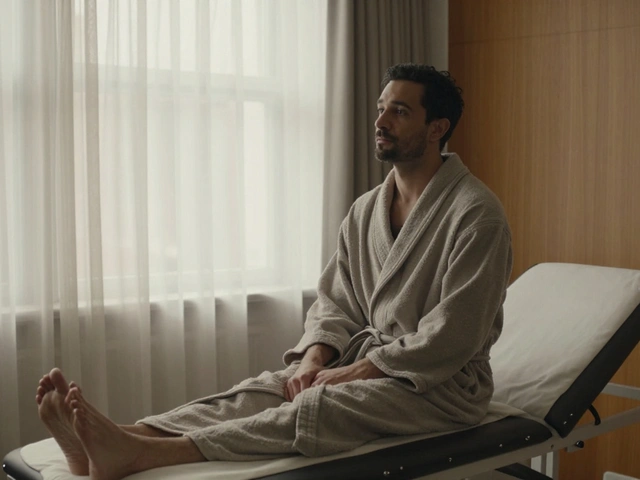Thai Massage London: Your Guide to Real Relaxation

Forget those old images of gentle oil massages. A real Thai massage is more like assisted yoga with a side of deep stretching. Clothes stay on, you lie on a floor mat, and a skilled therapist uses their hands, arms, elbows—sometimes even their feet—to work through stiff muscles and tension points. You’ll be pulled, pressed, and sometimes gently twisted in ways you probably never try at your desk job.
In London, you don’t have to follow the crowds into a fancy spa. Some of the best Thai massages are found in small, family-run studios tucked away on side streets. Prices and experience can vary wildly so it pays to do a little homework. Don’t judge a place just by the candles on the counter or how plush the robes look—what you want is technique.
A lot of people book a session hoping to just relax, but the real benefit goes deeper than stress relief. Thai massage can loosen up tight hips, boost circulation, and even help get rid of those stubborn aches from sitting all day. If you want more than a relaxing hour, ask for a traditional Thai massage—not the Western “fusion” options that are sometimes more gentle and less thorough.
- What Makes Thai Massage Different
- Key Health Benefits Backed by Science
- How a Typical Thai Massage Session Goes
- Choosing a Great Thai Massage Spot in London
- Tips for Your First Thai Massage
- Who Should Be Careful or Avoid Thai Massage
What Makes Thai Massage Different
Most massages you find in London involve oil, soft music, and maybe drifting off for a quick nap. Thai massage breaks those expectations in a good way. It’s often called "lazy man’s yoga" because the therapist does most of the work, stretching and moving your body while you just let go and breathe.
The technique behind Thai massage dates back more than 2,500 years. It mixes elements of yoga, acupressure, and even a bit of meditation. Unlike Swedish or deep tissue styles, you stay fully clothed (wear something stretchy or loose). No oils or lotions—just you, the mat, and a therapist who really knows muscle lines (called "Sen" lines in Thai tradition).
Here’s what makes a real thai massage London experience stand out:
- Active stretching: The therapist helps move your arms, legs, and back through a range of positions. It feels intense, but those stretches target tension most of us don’t even realize we’re carrying.
- Pressure points: Therapists use their thumbs, palms, forearms, and even knees to press into tight spots, aiming to boost blood flow and ease muscle knots.
- No need for oil or a massage table: You lie on a firm mat on the floor—so there’s way more freedom to move.
- Choreographed rhythm: Sessions are often a smooth flow, almost like a dance, moving from one area of the body to another. The rhythm helps keep your mind calm while your body gets worked over.
This approach is all about getting you moving, loosening up, and re-setting your body mechanics—not just rubbing sore spots.
| Feature | Thai Massage | Western Massage |
|---|---|---|
| Clothes | Loose/Stretchy Clothes | Usually Undressed with Towels |
| Table or Mat | Firm Floor Mat | Massage Table |
| Use of Oils | No | Yes |
| Main Techniques | Stretching, Compression | Gliding, Kneading |
| Therapist’s Tools | Hands, Elbows, Knees, Feet | Mostly Hands |
| Client Activity | Passive Stretching | Mostly Static |
People who try a true Thai massage are usually surprised by how active it feels and how much it wakes up tired bodies. If you don’t like the slippery feel of oil or you want more than a simple back rub, this style stands out from the crowd.
Key Health Benefits Backed by Science
You might wonder if Thai massage is really worth the hype. Turns out, it’s not just a good way to relax for an hour. Plenty of recent research highlights what a regular thai massage London session can actually do for your body and mind.
- Better Flexibility: One 2020 trial out of Mahidol University found subjects gained significant hip, knee, and ankle flexibility after just a few weeks of weekly Thai massage. The stretching isn’t just for show—it actually makes you move easier.
- Stress and Anxiety Relief: A study published in Complementary Therapies in Clinical Practice (2015) showed a drop in stress hormones and anxiety scores among office workers after multiple Thai massage sessions.
- Lower Back Pain: Chronic sore back? In 2015, researchers in Thailand showed that regular Thai massage helped reduce pain and improve movement for people with lower back issues almost as much as physical therapy.
- Better Sleep: The deep pressure work can boost serotonin and lower cortisol, setting you up for deeper, better sleep. Some people say it knocks them out that very night.
| Benefit | How Fast? | Supports |
|---|---|---|
| Flexibility | 3-4 sessions | Clinical studies |
| Stress Relief | 1-2 sessions | Therapy reviews |
| Lower Back Pain | 4-6 sessions | Medical trials |
| Sleep Quality | After single session | Anecdotal + studies |
So, if you’re fighting stiff joints, never-ending stress, poor sleep, or nagging aches, Thai massage isn’t just a treat—it’s backed by real data. Just remember, for chronic stuff, one session gives you a taste, not a cure. Most studies say results come after three or more sessions in a row.
How a Typical Thai Massage Session Goes
When you show up for a thai massage London experience, it starts way differently than your usual spa appointment. First thing: you’ll swap your street clothes for loose pants and a comfy top (most places provide these so you don’t wreck your own gear). No oil, no towels—just you, your clothes, and a floor mat. This style is called ‘Nuad Thai’ back in Thailand, and it’s about movement and pressure, not slippery lotions.
The session usually kicks off with a chat about your health—joint pain, injuries, what’s bugging you. Be honest. Therapists need to know what to avoid. Then you get on the mat, and the therapist starts at the feet and slowly works up. The main moves? Pressing, stretching, pulling, rocking—sometimes all at once. Imagine a mix of deep tissue massage and assisted yoga. Don’t be surprised if they use elbows or knees to target muscle knots.
Here’s the typical flow of a session:
- Dry massage on a mat: No oils, you’re fully clothed.
- Pressure along energy lines: These are called ‘Sen’ lines. It’s an old-school bit of Thai medicine. Expect steady, rhythmic pressing with hands, thumbs, or feet.
- Gentle pulling and rocking: Loosens the joints and helps blood flow.
- Deep stretches: Your therapist might move your limbs through yoga-like stretches—don’t force it, just breathe and let them guide you.
- Personalized focus areas: Got stiff shoulders? Ask for extra time there. Many therapists check in as they work.
A full Thai massage usually lasts 60 or 90 minutes. But even a 30-minute session can target your top problem spots pretty effectively. Here’s what’s totally normal to feel: a bit of discomfort during deep stretches, a cracking joint or two, and afterwards—almost everyone feels taller and lighter, sometimes a little sore (think post-workout, not injury).
If you’re curious how different session lengths stack up, take a quick look at the table:
| Session Length | Average Price in London (£) | Who Picks This | Focus |
|---|---|---|---|
| 30 minutes | £35–£50 | Busy workers, first-timers | Specific trouble spots, no full body |
| 60 minutes | £55–£80 | Most people | Full body with extra focus if needed |
| 90 minutes | £75–£110 | Regulars, deeper work | Whole body, unhurried, deep stretching |
Before you leave, therapists usually bring you some water or warm tea. You might be a little sore the next day—don’t worry, that means it’s working. If you feel real pain or bruising, always let the studio know. Good therapists take your feedback seriously and only want you leaving relaxed, not battered.

Choosing a Great Thai Massage Spot in London
You’ve seen loads of places promise the real deal, but picking where to get a proper thai massage London isn’t just about what looks fancy on Instagram. Quality matters—so let’s break down what to look for, what to ask, and a few must-know facts.
First, check if the therapists have proper training. Look for places where staff were certified at Thai massage schools, like the Wat Pho Thai Traditional Medical and Massage School in Bangkok, or trained by someone who was. Studios should mention this in their bios or on their websites. Don’t see it? Ask directly.
Location counts too. You’ll find good options in places like Soho, Marylebone, and Bayswater. These areas are dotted with independent spas, some of which have 5-star Google ratings and return customers for years. Here are some tips for separating a tourist trap from somewhere that knows what they’re doing:
- Read recent reviews, not just the star rating. Look for comments about “authentic stretching,” “professionalism,” and therapists using real technique.
- Avoid spots surrounded by dozens of ‘walk-in’ offers—these sometimes focus more on fast volume than individual care.
- Ask how long a typical session lasts. Proper Thai massages should be at least 60 minutes. Anything under that is probably rushed.
- Call ahead and ask about who does the massage. If they can’t answer or just say “anyone,” it’s not a good sign.
- Pay attention to hygiene: towels, mats, and the space should all look (and smell) spotless.
For a clear comparison, here’s a table of average prices and session lengths for Thai massage in central London (as of 2025):
| Area | Average Price (60 mins) | Typical Session Lengths |
|---|---|---|
| Soho | £60–£80 | 60–90 mins |
| Marylebone | £70–£100 | 60–120 mins |
| Bayswater | £65–£85 | 60–90 mins |
| East London | £55–£75 | 60–90 mins |
Don’t be shy about calling or emailing a spa with questions. Good places expect you to ask and are happy to tell you about their therapists and what makes their service different. And if a place offers a “Thai massage” but only lists oil massages on the menu, that’s a clue it’s not the real thing.
The best part? Once you find a trustworthy spot, book in advance—Londoners know a good Thai massage is gold, and slots fill up fast, especially after work or on weekends.
Tips for Your First Thai Massage
Thinking about booking your first thai massage London session? There are a few things everyone should know before jumping right in. Thai massage is seriously different from other styles, and knowing what to expect means you’ll get way more out of it. Here’s what to keep in mind:
- Wear comfy clothes: Baggy t-shirts and stretchy trousers work best since you’ll stay fully dressed (no oils needed and no stripping down).
- Arrive a bit early: This gives you time to fill in forms, relax, and use the loo so you’re not distracted halfway through.
- Don’t eat a big meal right before: Deep twisting and pressure on your stomach can feel uncomfortable if you’ve just eaten. Aim for a light meal at least an hour ahead.
- Communicate with your therapist: If anything hurts, speak up. Thai massage is firm and sometimes intense, but it shouldn’t hurt sharply.
- Expect stretching: Don’t be surprised if your therapist moves your arms, legs and even your back in all sorts of directions. Stay relaxed and let your body go with it.
- Take it easy afterwards: You’ll probably feel very loose and mellow, maybe even a little lightheaded. Drink water, avoid tough workouts for a few hours, and just let the effects kick in.
Curious how Thai massage stacks up compared to other styles? Check out these quick differences:
| Type | Clothes On | Oil Used | Focus |
|---|---|---|---|
| Thai Massage | Yes | No | Stretching, Deep Pressure |
| Swedish Massage | No | Yes | Gentle Relaxation |
| Sports Massage | No | Yes | Injury Focused, Muscle Repair |
The first time can feel a bit weird—people sometimes compare it to guided yoga, mixed with acupressure. But once you get the hang of it, most come out feeling taller and lighter. Plenty even report better sleep that night. Little tip? Book your session at a time when you can chill afterwards, not right before an important meeting. You’ll want to soak in that post-massage calm.
Who Should Be Careful or Avoid Thai Massage
Thai massage is awesome for a lot of people, but there are times when it’s not the best idea—or could even cause harm. This type of bodywork is pretty intense compared to a spa facial or a basic Swedish massage. Here’s what you should know before you book.
- Pregnancy: If you’re pregnant, especially during the first trimester, you should skip Thai massage. All the stretching and deep pressing could cause problems. Postpartum? Check with your doctor before trying anything new.
- Recent Surgery or Injuries: Surgery within the last six months, broken bones, healing muscle tears—any of these mean Thai massage is off-limits. The pulling and twisting could slow your recovery or even cause other injuries.
- Severe Osteoporosis: If your bones are fragile, deep pressure and stretching are risky. Osteoporosis can turn a helpful massage into a potentially dangerous one.
- Blood Clotting Issues: Thai massage boosts circulation, but that’s a problem if you have blood clots or any clotting disorder. Even if you just take blood thinners, you should talk to your GP first.
- Spinal Problems: Herniated discs, severe back pain, or any spinal condition that hasn’t been cleared by a specialist—Thai massage may make things worse. You don’t want extra pressure in the wrong spot.
- Uncontrolled High Blood Pressure or Heart Problems: The physical effort and extra blood flow involved can put a strain on your heart.
It might sound obvious, but if you ever feel sharp or shooting pain during a session, tell your therapist to stop right away. Good Thai massage therapists in thai massage London clinics ask about your health up front—they’re not being nosey; they’re keeping you safe. Always be honest about your health history and don’t be shy about speaking up.






